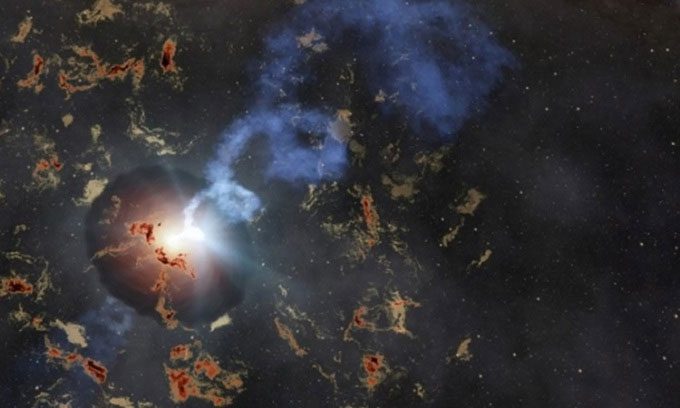A Team of Astronomers Discovers Light from a Repeated Explosion with Energy 100 Billion Times that of the Sun.
Astronomers were astonished to observe the unusual behavior of Tasmanian Devil or AT2022tsd, a rapidly fading optical phenomenon with brilliant blue light (LFBOT) located approximately one billion light-years away from Earth, according to research published on November 15 in the journal Nature. This discovery not only challenges the brief nature of LFBOT, which typically explodes and fades quickly, but also emits energy that is a staggering hundred billion times greater than stars like the Sun.

Simulation of the AT2022tsd explosion in the universe. (Image: Robert L. Hurt/Caltech/IPAC/Cornell University).
“Instead of fading away, AT2022tsd flashes brightly again momentarily, repeatedly,” said Anna Ho, the lead researcher and assistant professor at Cornell University. “LFBOT is already a bizarre event, but AT2022tsd is even stranger.”
First identified in 2018, LFBOT events are marked by extremely bright explosions, stronger than supernovae, before rapidly fading. However, the Tasmanian Devil exhibited at least 14 bright flashes, each lasting several minutes over a period of 120 days from the initial explosion. Many of these flashes were even brighter than the previous ones.
The event, which took place in September 2022, was detected using software designed by Ho and subsequently identified by 15 telescopes worldwide. This unprecedented event quickly attracted the attention of over 70 astronomers across the globe to decode the puzzling phenomenon.
So far, the leading hypothesis is that The Tasmanian Devil is caused by a failed supernova explosion (a star collapsing into a black hole or neutron star before exploding). For this to occur, a massive star approximately 20 times the mass of the Sun must exhaust its fuel and collapse. Other possibilities include a medium-mass black hole “devouring” a star, and the intense results when celestial bodies interact with a Wolf-Rayet star.
Although the chaotic behavior of the Tasmanian Devil remains a mystery, astronomers believe it may help us understand how dying stars behave and what remnants are left behind. Ho and her team are planning to investigate the process leading to the extreme burst of light. Previous identified LFBOT events include Koala, Camel, and Finch, but none resemble the Tasmanian Devil.





















































